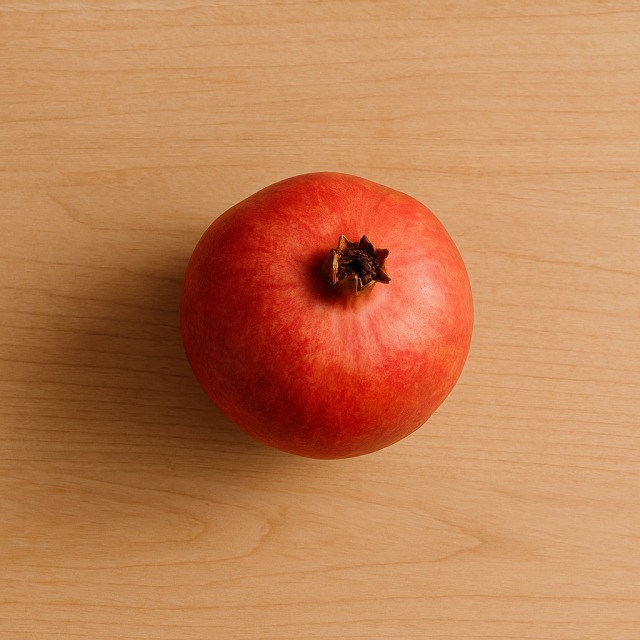Calorie Chart / Fruits / Pomegranate
How Many Calories Are in Pomegranate?
Calculation of the nutritional value & Recommended Dietary Intake of pomegranate
For g and a calorie requirement of kcal
| Calories 47 kcal | Proteins 0.8 g | Lipids 0.2 g | Carbohydrates 11 g |
| 2% | 1% | 0% | 4% |
Health benefits of pomegranate

Pomegranate - 100g
Calories 63 kcal
Proteins 1 g
Lipids 0.3 g
Carbohydrates 14 g
With only 63 calories per 100 g, pomegranate is classed as a low-calorie fruit, making it easy to control your daily calorie intake while still enjoying a naturally sweet taste. It supplies vitamin C for immune support, vitamin K for normal blood clotting and bone health, and folate (B9), which is useful during periods of growth or pregnancy. Its deep-red arils contain potassium, which contributes to normal muscle function and electrolyte balance without adding many calories.
Pomegranate is also renowned for its high concentration of polyphenols—especially punicalagins and anthocyanins—powerful antioxidants that may help protect cardiovascular health and limit oxidative stress. Several studies suggest that regular consumption could assist in maintaining healthy blood pressure, although these benefits are still considered "supposed" and not definitively proven. The fruit's moderate fibre content supports satiety, helping you spread calories evenly throughout the day.
Historically, pomegranate has symbolised fertility and longevity, from ancient Persia to Greek mythology. Despite its exotic aura, it remains a practical, low-calorie ingredient you can keep on hand in the refrigerator, freeze for smoothies, or dehydrate for snacks without dramatically boosting calories.
Tips for incorporating pomegranate into a balanced diet
Because pomegranate delivers flavour with few calories, it slips easily into balanced meals. Sprinkle the fresh arils over a green salad made with spinach, arugula, and a handful of walnut pieces for a lunch that is rich in micronutrients yet still light in calories. The sweet-tart notes lift the dish, so you are less tempted to add high-calorie dressings.
For breakfast, stir the seeds into plain yogurt or a bowl of muesli. This combination keeps morning calories moderate while providing a balance of proteins and complex carbohydrates. Athletes can boost recovery by blending pomegranate with a frozen banana and some semi-skimmed milk in a smoothie that stays under a reasonable calorie threshold.
In savoury cooking, try a Middle-Eastern-style quinoa tabbouleh: mix cooked quinoa, diced cucumber, tomato, and a generous handful of pomegranate. It replaces part of the olive oil usually required to boost flavour, cutting overall calories. Pomegranate molasses can also glaze duck breast or lamb chops; the natural sugars caramelise quickly, so you need less added sugar and therefore fewer calories.
Frequently Asked Questions
- How many calories are in pomegranate?
- There are 63 kcal per 100 g.
- Is pomegranate good for weight loss plans focused on lowering calories?
- Yes. Its high water content, moderate fibre, and only 63 calories per 100 g make it a satisfying way to reduce overall calories without feeling deprived.
- Which part of the pomegranate contains the most calories?
- The edible arils (seeds with surrounding juice sacs) contain virtually all the calories; the white pith and outer rind are inedible and provide negligible calories.
- Does pomegranate juice have more calories than the fresh fruit?
- Pomegranate juice is denser in sugars, so for equal weight, it generally provides more calories and less fibre than whole arils.
- How can athletes use pomegranate to refuel without excess calories?
- Mixed into a post-workout shake with yogurt or semi-skimmed milk, it offers antioxidants and carbohydrates while keeping calories moderate compared with commercial sports drinks.
Similar foods
Information provided by Calorie Menu may contain inaccuracies or errors. It cannot, under any circumstances, substitute medical advice or medication.










